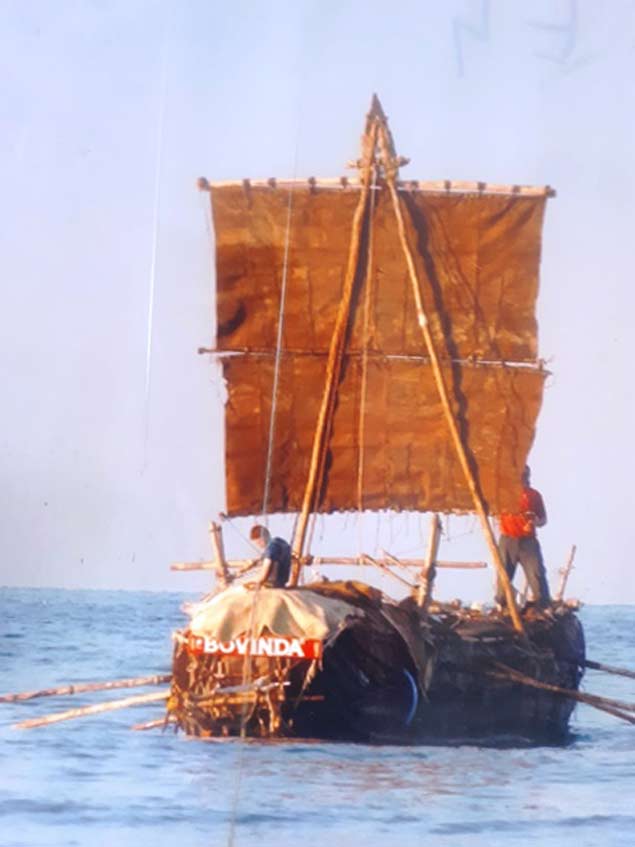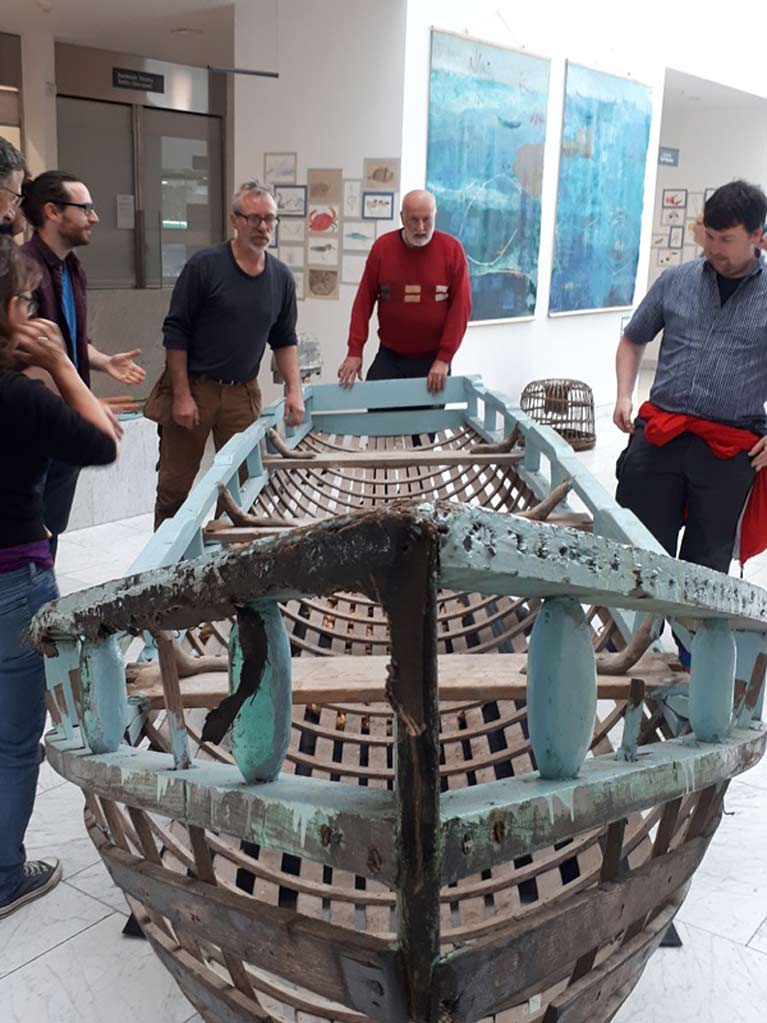On what type of boat did the original settlers of Ireland arrive?
They probably came over 10,000 years ago and began populating the coastal regions.
Could they have come on some type of sailing currach?
The Currach Association of Ireland has been discussing the historic aspects of Ireland’s most iconic boat as they focus on ensuring its protection and preservation for the future. From the paintings of Robert O’Flaherty’s classic film ‘Man of Aran’ through photographs and films, the currach identifies maritime ‘Irishness’ in a way few other symbols achieve.
 Experimenting with a Sailing Currach version on the River Boyne
Experimenting with a Sailing Currach version on the River Boyne
“People assume that because they are iconic, with the imagery they have, that the currachs will always be there, but will they, if nothing is done to ensure their future?” That is the focus of the Association.
"Could the original settlers to Ireland have come on some type of sailing currach, 10,000 years ago?"
There is a passion amongst those who love currachs which is uplifting to experience.
They are proud of their boats and the Irish maritime history and culture they resonate. Martin O’Donoghue is one of the leaders who outlines how and why it was founded on my Podcast this week and that it is particularly interested to hear where currachs are used.
 The Currach Association of Ireland are preserving Currachs
The Currach Association of Ireland are preserving Currachs
I was fascinated to hear Claidhigh O’Gibne talk about the research and development of the Boyne sailing currach, made from traditional skin-on-frame. That reminded me of interviewing Tim Severin on television many years ago when he was recreating St.Brendan’s leather boat journey across the Atlantic.
“We are people of the sea, it is our heritage. We must know about our history and skin boats are that history. It is important for young people to understand our history and culture of the sea.” Claidhigh said. He talked about the making of leather sails, the challenge of handling them on a boat and getting that boat to sail.
“The public view is of black boats that all seem alike, but few boats are as varied. There’s enough interest and activity related to currachs going on around the entire island of Ireland, but we have to be certain of preserving their iconic culture and history,” says Martin O’Donoghue on behalf of the Currach Association.
LISTEN TO HIM ON THE PODCAST BELOW



























































